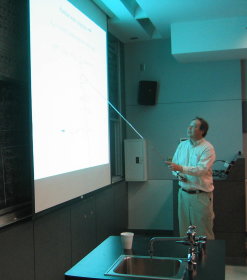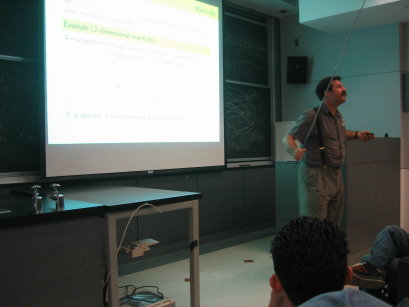A quick update:
* There was a second installment of the discussion led by George Johnson about press coverage of string theory. He went back to look to see what exactly some of those early articles said… How much coverage was there to start with? When did it start? When did it begin get out of hand? Did it get out of hand? Is this all just part of a standard bubble that happens for any field that the press decides to cover, a sort of manufactured (my word not his) boom and bust cycle? All issues that were touched upon in the discussion. Note also that the discussion broadens out considerably -as it should, (finally!)- to talk about the broader issue of coverage of topics in physics and science in general. The positive and negative effects of press coverage on attracting the next generation of students was also discussed. The discussion (this aspect in particular) was especially interesting because of the remarks by a number of senior people in the audience who were able to talk about their experiences over the years having seen the cycles recruitment of students in their own departments. Worth a listen/look at the archive here.
* Lee Smolin has written a “Dear Friends†letter in response to some of the things that have been pointed out about his book, and about other points he’s made publicly in various discussions. He’s given over some time to write quite a bit, which in general is a good thing to have done. You can find it here.
I’ll leave it to you to form your own opinion about Smolin’s remarks (I’ve not had time to read it in detail yet), and start a discussion here. Maybe ask him some followup questions here, for example. To help with context and build a more complete picture, do read some of the earlier comments and discussions involving him -and questions put directly to him- on the threads that share the name of this post. (e.g., Here and here.) Put those alongside the discussion with Peter Woit and of the central thesis of Woit’s book too. They are inseparable.
My set of opinions on the issue is the same as it was before. Even though I’ve said it all so many times here, since blogs seem to have no memory, I will summarize a bit:
[…] Click to continue reading this post →





















